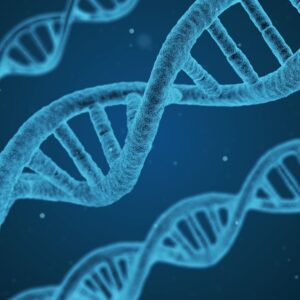
Many people aspire to have a perfect body. However, the “perfect” bodies of Instagram influencers – the bodies many of us are envious of – are often not a realistic or accurate representation of an ideal woman’s body.
Health and fitness influencer Joanna Soh is a personal trainer and nutrition coach with 2.5 million YouTube subscribers who advocates for body positivity and realistic body image expectations.
She explains that many women believe that by following the latest fad diet and exercise regimes, they can look like their favourite influencer, not realizing that the “perfect” bodies they’re seeing on social media are often heavily edited or surgically enhanced.
Soh explains, “The truth is, the bodies we see on social media are more of a fantasy than reality.”
The body image ideals promoted by Instagram influencers are harmful because they’re completely unrealistic. Many of these influencers do not disclose the fact that they’ve edited their photos, nor do they disclose that they’ve had liposuction, breast implants, butt lifts, and other surgical enhancements.
Instead of disclosing these surgical enhancements and photo editing tricks, many influencers are pretending they achieved their body through a raw vegan diet, a steady workout routine, or healthy living. In other words, unobtainable bodies are being promoted under the guise of health, wellness, fitness and diet.
Our Bodies are Interdependent on our Genetics
Soh wisely points out, “Our bodies are interdependent on our genetics”. She adds that “What we see on social media does not come close to representing the diversity of bodies existing in the real world.”
Because of genetics, some women have petite body types, and other women have a larger bone structure. Our height, body type, shape, frame and size are largely determined by our genetics.
Soh explains, “Some of you were born to be long and lean with low body fat, some of you have an athletic structure, and some of you are curvier with higher body fat.”
We’re Not Made From a Factory Mold

Joanna Soh explains that unlike Barbie dolls, “Human beings are not made from a factory mold, and we’re not supposed to all have the same Barbie-shaped bodies.” Soh advocates for the fact that every body is beautiful and unique.
Despite that fact that your body is genetically predetermined to be a certain shape or size, it is true that you can implement lifestyle changes to somewhat alter your body if that’s your goal.
“It’s still possible to improve the body you were given, and feel better in it”, explains Soh.
If you want to improve the body you were born with, for example by losing weight, gaining curves, or toning up, what can you do? Joanna Soh used information about her body that she received through her CircleDNA test results to improve her body.
How to Use the Information Provided in DNA Test Results to Achieve Your Body Goals
Although your genetics play a role in your body’s shape and size, and impact how good or poor your metabolism is, that doesn’t mean you should throw your hands in the air and give up trying if you weren’t blessed with great genes.
Your lifestyle choices play a huge part on your body’s appearance. For example, it’s a lifestyle choice to keep your cupboards free of unhealthy junk food, and exercise self-control at restaurants.
If you’re not blessed with the best genes in terms of body type, metabolism or waist circumference, you can still improve your body with hard work, healthy living and healthy eating.
“Just remember,” Soh says, “Every body is different, and every body is beautiful.”
Keep your body goals realistic, and remember that the “perfect body” is not measured by the unrealistic beauty standards that you see on social media.
If you want to use your DNA results to help guide your body goal efforts through eating and exercising in a way that suits your specific body type, order your CircleDNA testing kit today and learn what your body needs you to modify or alter based on what’s written in your unique DNA. To sweeten the deal: Use Joanna’s promo code JOANNA33 for 33% off any kit!







This Post Has 7 Comments
Comments are closed.